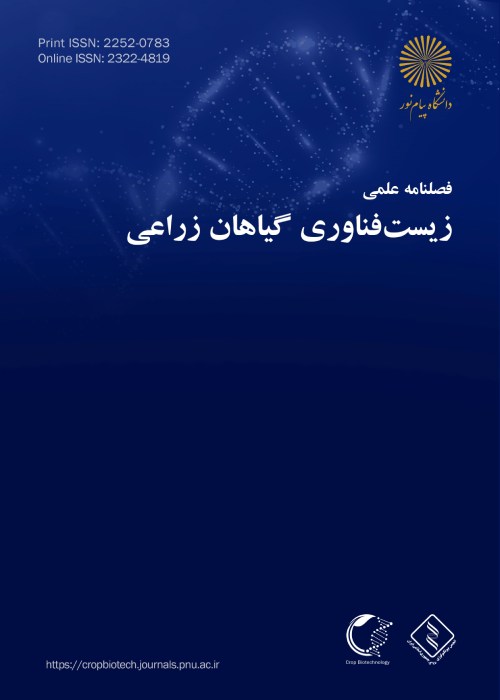Identification of possible properties of an unknown protein from Arabidopsis using bioinformatics methods
Author(s):
Article Type:
Research/Original Article (دارای رتبه معتبر)
Abstract:
Today, the genome sequence of most organisms has been identified, and this information is useful in understanding the function and characteristics of organisms. In the meantime, there is unprocessed information that can be used to study unknown proteins and genes with the advancement of technology and the use of bioinformatics tools. In this research, the sequence of a gene with unknown function from Arabidopsis thaliana with accession number of X91953.1 in NCBI database was used to investigate and study its structure and possible function. This gene is related to chromosome number one in Arabidopsis thaliana and with 676 base pairs, it produces a protein with 150 amino acids and a molecular weight of approximately 15 kD. By using bioinformatics servers, the characteristics of both gene and protein sequences were investigated and it was found that it has 18 types of regulatory motifs, the functions of some of which are known, which can be related to the response to light and the activity of Cis elements for expression in the meristem. The analyzes showed that this protein has 38 motifs, three of them are conserved with high frequency. This protein has a signal peptide at its Nt and is leaked into the extracellular space. Therefore, its presence in the intercellular space is more likely than the nucleus and intracellular organelles. There is also a regulation site of a microRNA on its transcript and this microRNA is active in response to salinity and also in the embryo. This unknown protein has about 90% homology with another protein in Arabidopsis with accession number of UPF0540 (At1g62000), which can be used for further studies to identify the role of the desired protein. This protein is expressed in 10 different tissues, mainly in embryo and seed endosperm. Based on all the analyzes carried out, two functions of seed coat differentiation and the biosynthesis of secreted substances due to light can be predicted for this protein. In the continuation of this work, laboratory methods are recommended for testing the functions attributed to this gene.
Keywords:
Language:
Persian
Published:
Journal of Crop Biotechnology, Volume:12 Issue: 39, 2023
Pages:
55 to 67
https://magiran.com/p2540933
دانلود و مطالعه متن این مقاله با یکی از روشهای زیر امکان پذیر است:
اشتراک شخصی
با عضویت و پرداخت آنلاین حق اشتراک یکساله به مبلغ 1,390,000ريال میتوانید 70 عنوان مطلب دانلود کنید!
اشتراک سازمانی
به کتابخانه دانشگاه یا محل کار خود پیشنهاد کنید تا اشتراک سازمانی این پایگاه را برای دسترسی نامحدود همه کاربران به متن مطالب تهیه نمایند!
توجه!
- حق عضویت دریافتی صرف حمایت از نشریات عضو و نگهداری، تکمیل و توسعه مگیران میشود.
- پرداخت حق اشتراک و دانلود مقالات اجازه بازنشر آن در سایر رسانههای چاپی و دیجیتال را به کاربر نمیدهد.
In order to view content subscription is required
Personal subscription
Subscribe magiran.com for 70 € euros via PayPal and download 70 articles during a year.
Organization subscription
Please contact us to subscribe your university or library for unlimited access!



